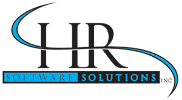After HR professionals have chosen their ideal vendor for a Human Resource Information System (HRIS), they should consider the implementation process itself. Just as the previous steps in HRIS preparation required research and planning, implementation also needs to be overseen properly with a mind for different kinds of testing and documentation.
By now, there should be a strong working relationship between the vendor and client HR leaders. Together, they should investigate the system itself and compare it to the documented requirements that they’ve established beforehand. All of the details of the system have to be assessed accurately and at all times during the configuration.
This attention to specificity at the beginning of implementation could save businesses time and money, because they won’t have to invest in changes later on. In addition, the first launch of the new HRIS determines important enterprise factors. User acceptance and parallel testing help to guarantee system stability as work on it continues.
HR Software Solutions’ President Lauren DeFilippo says that an HRIS independent software implementation consultant (HRISIC) will help companies improve this process because of their knowledge of how HR systems work and what to do with them.
“An HRISIC will have extensive experience in systems implementation and has the ability to focus on a successful delivery without being sidetracked with internal management issues or day-today tasks,” she wrote in an article for Workforce Solutions. “This allows for a more effective, speedy implementation, ultimately proving to be cost-effective.”
Finally, after these operations and improvements, as well as sufficient training, the system will be ready to go live and the HR department will have documentation of the entire process to consult for reference later on.
This blog will continue to explore the necessities of implementation, so please be sure to visit us again in the future to learn more.

